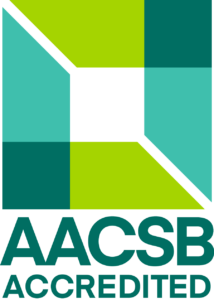Business Accounting
- Credits: 6
- Ending: Examination
- Range: 2P + 2C
- Semester: winter
- Year: 2
- Faculty of Commerce
Teachers
Included in study programs
Teaching results
The main goal of the course is to teach the students to use the information from the financial
statements, understand the economic factors which could affect them and the apply the accounting
principles in the process of their preparation. The students will acquire skills and knowledge
necessary for their compilation. In addition, the students acquire knowledge about the structure of
the financial statements and the relation between its various parts, reflecting the requirements of the
various frameworks for accounting, with a special focus on trading companies. The students will be
able determine and present the financial position of an accounting entity, assess its financial stability,
and use the acquired information for their economic decisions, including the use of accounting
information for determination of taxes.
Knowledge – acquire knowledge on accounting and its relation to economic decisions; skills –
to keep accounting records necessary for the compilation of the financial statements – to use the
accounting information for the economic decisions
Indicative content
Financial statements and its use in practice by leading international companies and in the SR.
Factors which contribute to the results presented in the financial statements. Legal framework
of accounting and its impact on the comparability of the accounting data. Financial analysis and
the elements of the financial statements (assets, liability, equity, expenses, income, cash flows).
Measurement of assets and liabilities. Description of the financial statements and its compilation.
Accounting for selected transactions, including the purchase and sale of the merchandise and the
value added taxes. Interrelation between the accounting and tax systems.
Support literature
Základná:
1. Šlosárová, A. - Blahušiaková, M. 2020. Analýza účtovnej závierky. Bratislava : Wolters
Kluwer SR. ISBN 978-80-571-01666-6
2. Juhászová, Z. a kol. 2021. Účtovníctvo. Bratislava : Wolters Kluwer SR
3. Tumpach, M. - Gedeon, M. - Parajka, B. - Surovičová, A. 2023. Účtovníctvo pre manažérov a pre podnikateľov. Zbierka príkladov. Bratislava : SKCÚ
Odporúčaná (aktuálne právne normy pre oblasť účtovníctva v SR):
1. Zákon č. 431/2002 Z. z. o účtovníctve v znení neskorších predpisov.
2. Opatrenie Ministerstva financií č. 23054/2002 –92 ktorým sa ustanovujú podrobnosti
o postupoch účtovania a rámcovej účtovej osnove pre podnikateľov účtujúcich v sústave
podvojného účtovníctva v znení neskorších predpisov.
3. Opatrenie Ministerstva financií Slovenskej republiky z 3. decembra 2014 č.
MF/23377/2014-74, ktorým sa ustanovujú podrobnosti o individuálnej účtovnej závierke a
rozsahu údajov určených z individuálnej účtovnej závierky na zverejnenie pre veľké účtovné
jednotky a subjekty verejného záujmu v znení neskorších predpisov
Syllabus
Indicative content: 1. Accounting information for investors: financial statements of selected companies quoted at New York Stock Exchange and analysis of the scope of disclosed information. Register of the financial statements in the SR. 2. Economic and non-economic factors contributing to results presented in the financial statements (changes in the level of the production, provision of services and sales of goods and merchandise; changes of cost from operating and financing activities; fraudulent financial reporting). 3. Impact of the alternative ways of accounting for selected transactions, events and other conditions on the economic results of a company. Accounting regulation and its impact on comparability of accounting information. National and international (IFRS) legal framework of accounting. 4. Selected financial metrics and their relation to financial statements. Definitions and criteria for the recognition of the elements of the financial statements (assets, liabilities, expenses, income). 5. Measurement of assets and liabilities and its impact on the metrics of financial analysis. Historical costs, current value, and fair value. 6. Accounting records, accounting books and their use in the process of the preparation of financial statements. 7. Accounting for funding of entities from the contribution of the owners, credits and loans. 8. Accounting for acquisition of assets and its use in the process of manufacturing, sale and / or provision of services. 9. Accounting for merchandise, including its import and export. 10. Value added tax and its reflection in the accounting. 11. Preparation and presentation of the Balance-sheet. 12. Preparation and presentation of the Income statements and the cash flow statements. 13. Interrelation between the accounting and tax systems.
Requirements to complete the course
26 hours of lectures
26 hours of seminars
26 hours of preparation for the seminars
54 hours of preparation for the interim concept check test (30 % of the overall grading)
54 hours of preparation for the exam,
- out of which 24 hours of the preparation for the exercises (30 % of the overall grading)
- out of which 30 hours of the preparation for the compilation and the analysis of the financial
statements of a company (40 % of the overall grading
Total study load (in hours): 156
Date of approval: 11.03.2024
Date of the latest change: 23.10.2023

